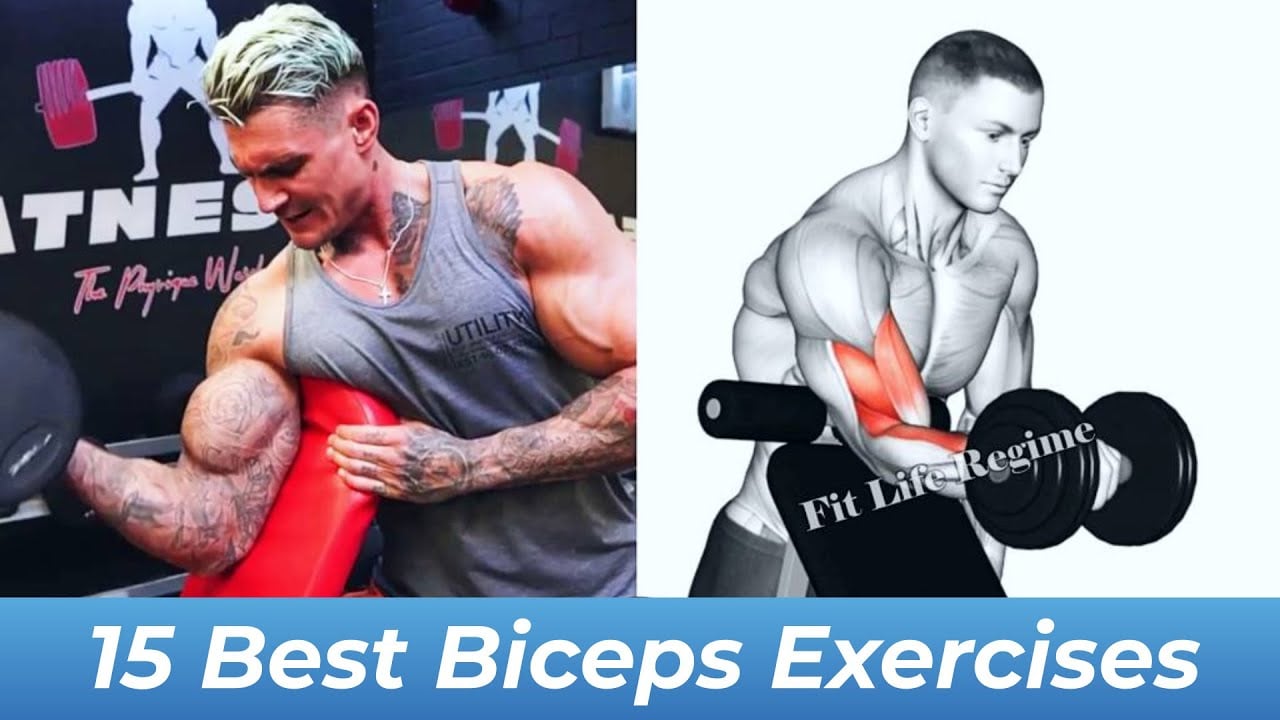You’re in the right place if you want to build a bigger and stronger bicep. Building bigger and more impressive biceps involves more than doing the same bicep curl over and over again.
Biceps, despite being small muscles, require time, knowledge, and strategic training to reach their full potential.
Here’s the good news.
We will examine the biceps’ anatomy and how the bicep muscles work to ensure you do exercises as effectively as possible and get those great arms.
Don’t worry —this journey goes beyond understanding the muscle. We will provide you with the best bicep exercises, whether you are looking for massive hypertrophy (muscle size), raw strength, or efficient workouts that maximize your time.
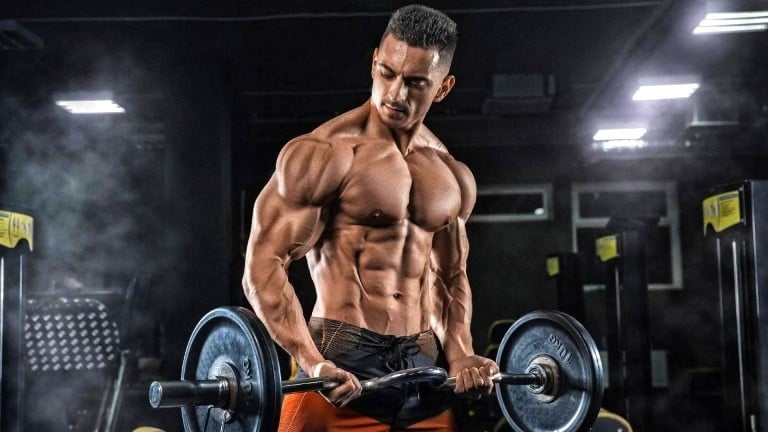
- Biceps Muscles (Anatomy)
- Function of Biceps
- 10 Best Bicep Exercises
- 1. Bicep Curl
- 2. Hammer Curl
- 3. Concentration Curl
- 4. Incline Curls
- 5. Spider Curl
- 6. Preacher Curl
- 7. One Arm High Cable Curl
- 8. Reverse Curl
- 9. Zottman Curl
- 10. Drag Curl
- Bonus: Chin Up
- Bicep Workout Routines With Tips and Techniques
- 1. Select Weekly Training Sets Based on your fitness level.
- 2. Choose a Training Plan As Per Your Goal
- 3. Progressive Overload
- 4. Add Compound Exercises
- 5. Bicep Workout Routine For Beginner
- 6. Bicep Workout Routine For Intermediate
- 7. Other Tips To Build Bigger And Stronger Biceps
- Conclusion
Biceps Muscles (Anatomy)
The biceps brachii muscle (biceps) is a large, thick upper arm muscle.
The Biceps Brachii is attached to the forearm bone called the radius and originates at the scapula in two heads (the bicep gets its name from the two heads).
Your biceps has two heads: short (inner) and long (outer).
- The short head is located along the inner side of the anterior upper arm and the long head is located along the outer side of the anterior upper arm.
- The long head comprises the majority of the biceps’ peak, whereas the short head sits on the inner side and contributes to the biceps’ width.
The biceps is one of four muscles alongside the brachialis, brachioradialis, and coracobrachialis muscles that make up the upper arm.

Function of Biceps
The primary function of the Bicep muscle is to move the forearm towards the shoulder (elbow flexion).
The secondary function of the Biceps is supination of the forearm. This means turning the hand from a palms-down position to a palms-up position.
Building up your biceps can also improve your upper body strength and forearm stability, making throwing, lifting, pushing, and pulling easier.
10 Best Bicep Exercises
Before we get into the biceps workout routines you can follow, let’s see which exercises are the most effective for gaining muscle mass.
Here are the 10 best biceps exercises to build stunning biceps.
1. Bicep Curl
If you’re looking for straightforward bicep exercises to add to your routine, bicep curls are a great staple to get you started.
Bicep curling is a highly recognizable bicep exercise that builds muscle mass. It’s a great exercise for seeing results in strength and definition.
There are different ways to do a bicep curl to build a bigger and stronger bicep.
- Dumbbell Bicep Curl
- Cable Curl
- Wide Grip Barbell Curl
- Close Grip Barbell Curl
- Ez Bar Curl

A barbell curl is a pull-type isolation exercise that works primarily on your biceps and trains the muscles in your forearms.
- A wide grip focuses effort on the inner biceps (short head),
- Whereas a narrow grip arks the outer biceps (long head).
Note: In the study conducted, they found that the EZ barbell curl showed the highest overall electromyography (EMG) activity in the biceps brachii (BB) and brachioradialis (BR) muscles compared to the dumbbell curl (DC) and barbell curl (BC) variants.
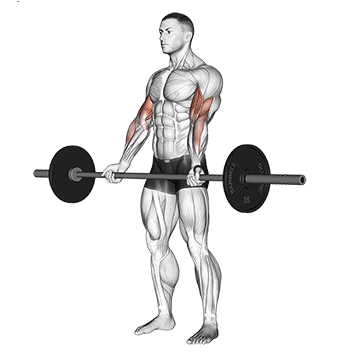
How To Do Barbell Curl
- Stand straight up with your feet shoulder-width apart.
- Hold a barbell with an underhand grip (palms facing up) and your hands slightly wider than shoulder-width apart.
- Allow the barbell to hang in front of your thighs at arm’s length.
- Keep your upper arms close to your sides and your elbows stationary.
- Pulling the barbell towards your chest. Continue curling until the barbell is at shoulder level.
- Hold this position for a brief pause and squeeze your biceps to maximize the contraction.
- Slowly lower the barbell back to the starting position.
Pro Tips
- Your body should remain fixed. Only your biceps should be used to move the weight.
- Pause at the top of the movement and squeeze your biceps.
- The motion should occur at the elbow to isolate the biceps, not on the shoulders.
2. Hammer Curl
When it comes to building massive biceps and forearms, the hammer curl is an effective isolation workout that targets the bicep, brachialis and brachioradialis.
Hammer curls are one of the most popular exercises among bodybuilders and regular weightlifters. They help build a thicker upper arm by strengthening the brachialis muscle below the biceps.
Hammer curls can be performed using various equipment such as:
- Dumbbell Hammer Curl
- Olympic bar Hammer Curl
- Cable Hammer Curl
- Seated Hammer Curl
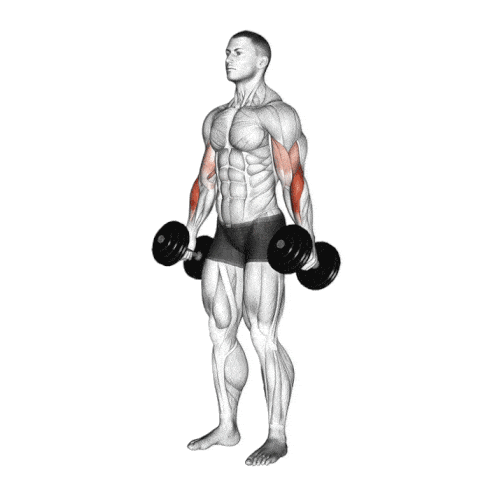
How To Do Hammer Curl
- Stand with your feet shoulder-width apart and a slight bend in your knees.
- Grab a pair of dumbbells and stand up with the dumbbells by your sides.
- Bend at the elbow, lifting the lower arms to pull the weights toward the shoulders.
- Squeeze the biceps at the top of the movement, and then slowly lower the dumbbell back to the starting position.
Pro Tips
- Raise and lower the dumbbell slowly.
- Keep your back straight, shoulders relaxed, and core engaged throughout the exercise.
- Keep in control of using your strength, not using momentum or gravity.
- Neither lean back as you lift the weight nor lean forward as you lower it.
Read More: Cable Hammer Curl: Muscle Worked, Benefit & Alternate
3. Concentration Curl
The concentration curl is well-known for its ability to focus on and isolate the biceps brachii muscle. It allows for a strong mind-muscle connection, enabling you to concentrate on the biceps and maximize their activation.
The concentration curl works only one arm at a time, so it helps you identify and correct any differences in strength between your left and right arms.
It is performed by sitting on a bench with the torso bent and the back side of the upper arm against the thigh. This stops shoulder movements and is a great way to focus on the biceps.
Concentration Curl Variations for Biceps Growth:
- Concentration curl (seated, standing)
- Cable concentration curl
- Reverse grip concentration curl
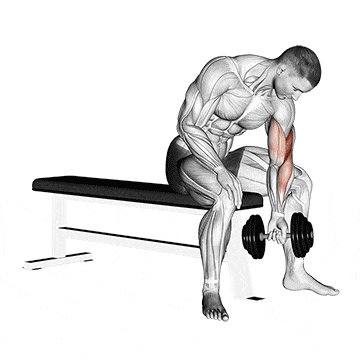
How To Do Concentration Curl
- Sit on a bench or chair with your feet flat on the floor and legs slightly apart.
- Hold a dumbbell in one hand and place the back of your upper arm against the inner thigh of the same side.
- Your arm should be fully extended, and your palm should face up.
- While keeping your upper arm still, exhale and slowly curl the dumbbell up towards your shoulder.
- Squeeze your bicep at the top of the movement and hold for a moment.
- Inhale and lower the dumbbell back to the starting position.
- Repeat for the desired number of repetitions, then switch to the other arm and repeat the same steps.
Pro Tips
- Make sure that your upper arm remains stationary against your inner thigh.
- Ensure you do the exercise with a controlled tempo and focus on contraction.
- Exhale as you curl the weight up, and inhale as you lower it back down.
4. Incline Curls
It is one of the best exercises for training the long-head biceps. In this position, your elbows are down at your sides behind you, which means your long head will be working from a stretched position.
This exercise is performed on an incline bench set at an angle, which helps isolate the biceps and places less stress on the lower back compared to standing curls.
The inclined position offers a wider range of motion, as the arms reach their maximum length at the beginning of the move. Increased range of motion can lead to improved bicep muscle activation and development.
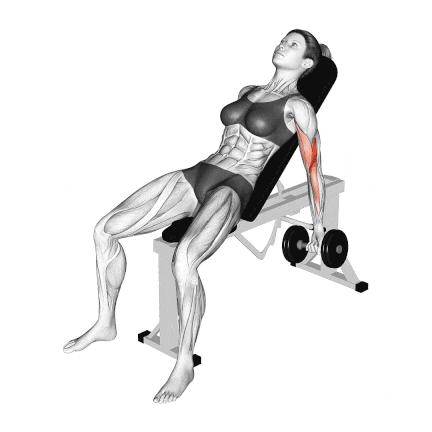
How To Do Incline Curl
- Set an incline bench at a 45-degree angle.
- Sit on the bench with your back against the pad, feet flat on the floor, and dumbbells in each hand.
- Hold the dumbbells with an underhand grip (palms facing up), arms fully extended. Allow them to hang by your sides.
- Keep your upper arms stationary against the bench.
- Curl the dumbbells upwards and contract your biceps.
- Continue to curl until the dumbbells are close to your shoulders. Let’s hold the position for a moment.
- Slowly lower the dumbbells back to the starting position in a controlled manner.
Pro Tips
- Keep your back flat against the bench, elbows stationary, and wrists aligned with your forearms.
- Go full range to build longer biceps.
- Don’t rely on momentum or a swinging motion when lifting the dumbbells.
- Breathe naturally, exhaling during the upward phase and inhaling during the downward phase.
5. Spider Curl
If you’re looking for a way to get more creative with your biceps workout, why not try the Spider Curl?
It produces an intense muscle contraction on every single rep. That why it is one of the best bicep exercises you can consider incorporating into your training regime if you want a train short head bicep.
Barbell spider curls train your biceps in a shortened (that is, maximally contracted) muscle position. This results in a powerful muscle pump that makes your arms appear more vascular and can also lead to significant hypertrophy.
Spider bicep curls are usually done with a barbell, but many other ways exist.
- EZ Bar Spider Curls
- Dumbbell Spider Curl
- Flat Bench Spider Curl
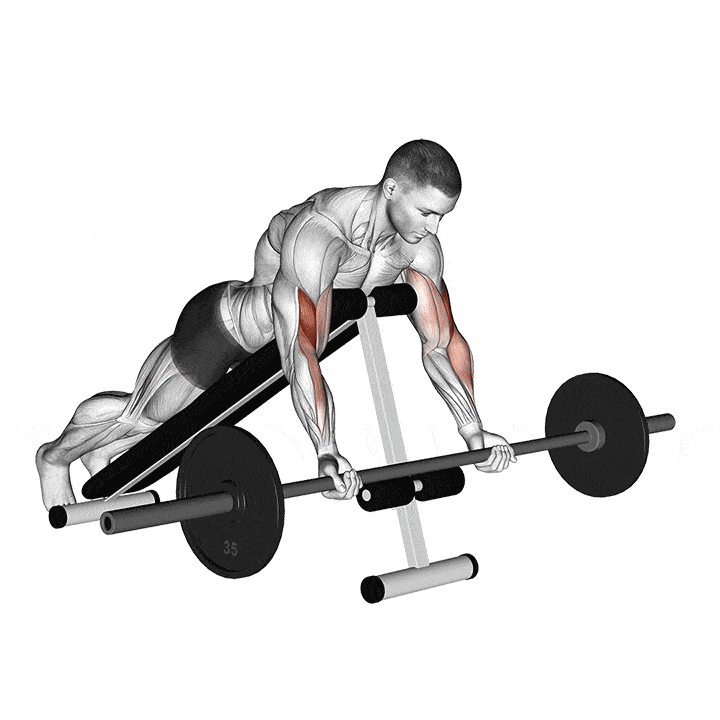
How To Do Barbell Spider Curl
- Adjust the bench to an incline, level to a 45-degree angle.
- Lean against the bench so that your chest is supported.
- Stand on the balls of your feet and keep them about shoulder width apart for stability.
- Let your arms hang in front of your torso. From here, have a barbell ready, or have it set-up in front of you.
- Slowly curl the barbell toward your shoulders and squeeze your biceps forcefully.
- Hold the contraction for a moment and then slowly lower the bar until your arms are fully extended.
Pro Tips
- Perform the exercise with a slow and controlled tempo, focusing on muscle contraction.
- Try different bench angles and grip widths to find the position that works best for your biceps and is comfortable for your body.
- Inhale during the eccentric (lowering) phase and exhale during the exercise’s concentric (lifting) phase.
6. Preacher Curl
The preacher curl isolates the biceps muscles by eliminating momentum and limiting the involvement of other muscles. This allows for a more targeted and intense bicep workout.
With a preacher curl, you get a lot of benefits that don’t come with regular bicep curls. Do preacher curl with a wider grip to impart more load on short-head biceps.

There are many ways to do preacher curls, each of which has its own benefits.
- Dumbbell Preacher Curls: Allow for a greater range of motion and independent arm movement.
- Reverse Grip Preacher Curls: Target the brachialis muscle and emphasize the outer portion of the biceps.
- Machine Preacher Curl : Provide a more controlled and stable environment for the exercise.
- Cable Preacher Curls: Provide continuous tension throughout the movement.
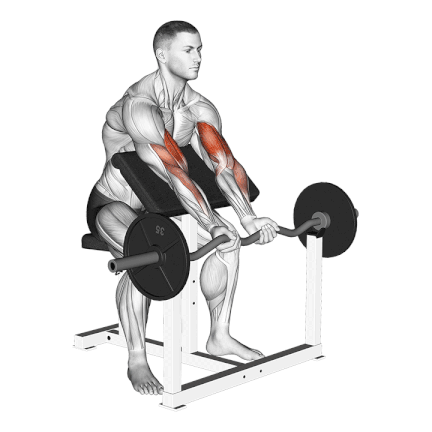
How To Do Barbell Preacher Curl
- Get seated on the Preacher Bench with your chest against the support.
- Grab the bar placed on the preacher’s bench rack in front of you.
- Curl the bar as in a standard barbell curl and get maximum contraction at the top.
- Lowering the bar slowly gives constant stress throughout the movement.
- Lowers the bar to get the maximum extension.
- Repeats the desired number of reps.
- During the last few reps, your short biceps heads should feel burning and intense.
Pro Tips
- Keep the motion slow and controlled throughout the set.
- Squeeze the biceps as hard as possible as you get the weight to the top.
- Use a wide grip to work the short-head biceps and a close grip to work the outer biceps.
7. One Arm High Cable Curl
The High Cable Curl exercise is a great option for targeting the biceps and building muscle width and thickness.
The high cable curl has two main versions: one-arm and two-arm. Both variations are effective, but the one-arm version allows you to use more relative weight for potentially greater gains in biceps size and strength.

How To Do One Arm High Cable Curl
- Begin by standing sideways next to a high pulley machine, arm extended out at about shoulder height, and gripping the handle with one hand.
- Slowly curl the cable towards your head, isolating the bicep until you feel tension, and hold for a count.
- Return to the starting position and repeat for as many reps and sets as desired.
- Repeat the exercise with your opposite arm.
Pro Tips
- Hold for a count of two and squeeze your biceps brachii.
- Inhale as you extend your elbow, exhale while squeezing.
Know More: Bicep Cable Workout To Build Mass and Strength
8. Reverse Curl
The reversal curl is an essential part of bicep workouts. It is a variation of the traditional biceps curl exercise that targets the brachialis and brachioradialis muscles and the biceps brachii.
This exercise uses an overhand grip (pronated grip) instead of the typical underhand grip (supinated grip), which shifts the emphasis to different muscles of the forearm and upper arm.
Strengthening this muscle can improve grip strength and improve the look of the forearm and upper arm.
Try different variations of the reverse curl to build bigger biceps.
- Barbell Reverse Curl
- Dumbbell Reverse Curl
- Reverse Ez Bar Curl
- Cable Reverse Curl
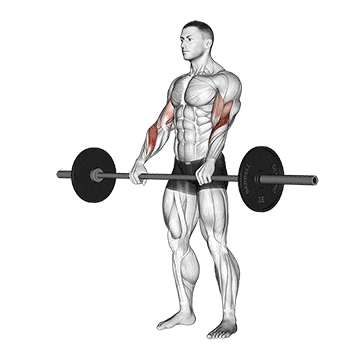
How To Do Barbell Reverse Bicep Curl
- With your feet shoulder-width apart, stand upright and hold a barbell in front of your thighs with an overhand grip.
- Maintain a straight back, engage your core, and keep your elbows close to your body.
- Curl the bar up to shoulder level by bending your elbows.
- Continue the curl until the weight is close to your shoulders. Hold the contracted position for a moment.
- Inhale and slowly lower the barbell to the starting position.
- Repeat for desired reps.
Pro Tips
- Keep your wrists in a neutral position and avoid excessive flexion or extension.
- Your body should remain fixed. The weight should be moved with your biceps only.
- Ensure that your elbows are kept close to your sides with your knees slightly bent.
- Experiment with different grip widths to find the most comfortable and effective position.
9. Zottman Curl
The dumbbell zottman curl is one of the most effective variations of the bicep curl.
It utilizes different hand positioning at different portions of the lift.
The first portion, the regular curl, focuses on bicep strength. The second lowering portion, the dumbbell reverse curl, allows you to overload the forearms.
You can perform Zottman curls with both arms at the same time, or alternate the arm you lift with.
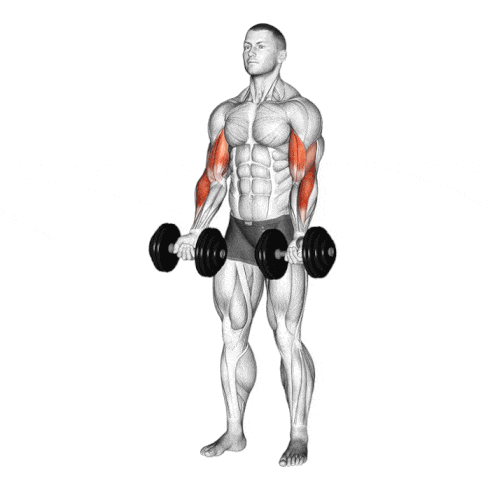
How To Do Dumbbell Zottman Curl
- Hold a pair of dumbbells to your sides.
- Keep your palms facing up as you curl the weights up to your shoulders. Pause at the top of the movement.
- Slowly rotate your grip so your palms are facing downwards.
- Using an overhand grip, slowly lower the dumbbells back to the starting position.
- When the dumbbells are close to your thighs, again turn your hands while returning to the starting position.
Pro Tips
- Perform this exercise in a slow, controlled manner for best results.
- Don’t go heavy. Choose a lighter weight and focus on perfecting your form.
Know More: Best Brachioradialis Exercises For Bigger Forearms
10. Drag Curl
The drag curl workout is a unique bicep curl variation in which you don’t completely bring the weight in front of your body. Thus, you have difficulty swinging and using momentum to get the weight up.
The long head of the bicep is emphasized the most due to the elbow positioning. As you curl up, your elbows pull back behind you, stretching the long head and activating it to a very high degree.
Variations on the drag curl to build bigger bicep
- Barbell drag curl
- Smith machine drag curl
- Dumbbell drag curl
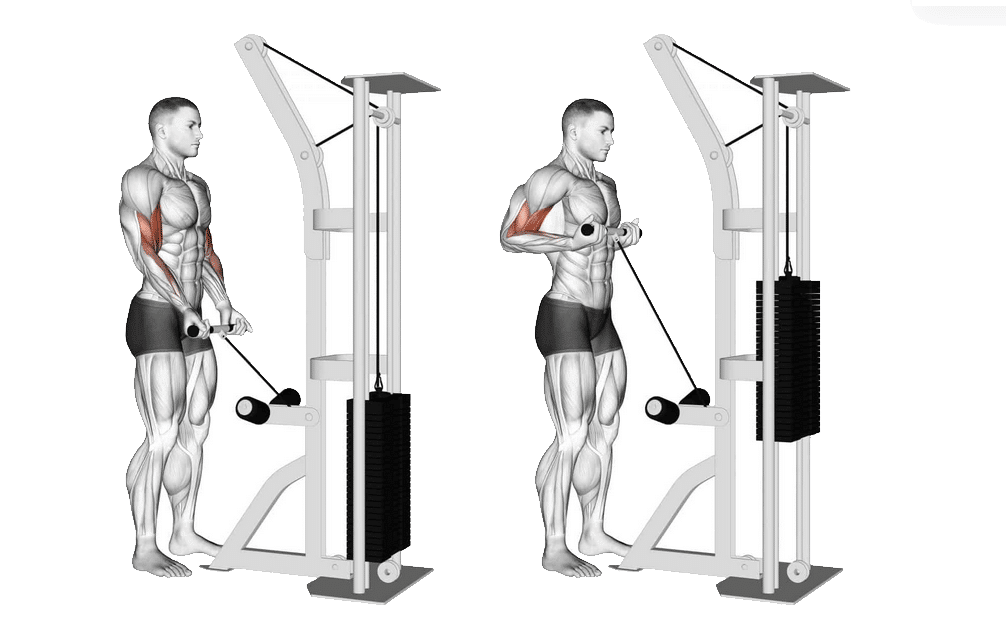
How To Do Cable Drag Curl
- Set up for the cable drag curl by attaching a straight bar to the low pulley cable machine.
- Stand with your feet shoulder-width apart, your knees slightly bent, and your abs are drawn in.
- Grab the bar with a double underhand (supinated) grip, with your hands slightly wider than shoulder-width apart.
- Bring your elbows and shoulders back slightly as you curl the bar upwards. It should feel like you are “dragging” the dumbbell up to your body.
- Squeeze your biceps hard at the top and slowly return to the starting position.
Pro Tips
- Try to use a lighter to moderate-weight
- Perform this exercise in a slow, controlled manner for best results.
Bonus: Chin Up
One of the best bodyweight exercises for your biceps is the chin-up. This exercise can induce serious muscle growth in the back and biceps.
Both pull-ups (with an overhand grip) and chin-ups (with an underhand grip) exhibit a significant degree of elbow flexion. However, research has shown that chin-ups significantly target the biceps.
In this exercise, the palms are faced towards the body. Since the lifter is pulling their own bodyweight, the biceps are usually exposed to loads heavier than what one can lift with a barbell.
The chin-up variations for biceps growth are:
- Standard chin-up
- Machine-assisted chin-up
- Band-assisted chin-up
- L-sit chin-up
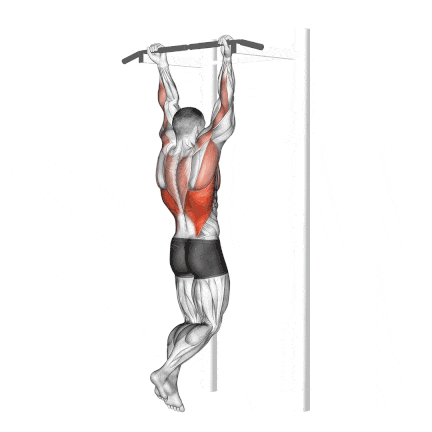
How To Do Chin Up
- Grasp a pull-up bar with an underhand grip, hands shoulder-width apart or slightly narrower.
- Straighten your arms, keep your knees bent and cross your lower legs.
- Retract your shoulder blades and pull your body until your chin aligns with the bar.
- Pause for one to two seconds at the top, with the biceps under maximum tension.
- Slowly lower to the start position.
Tips
- Avoid doing half reps and chasing numbers.
- Lower to almost full extension of the elbow, but avoid locking out completely.
Know More: 25 Different Types Of Pull Ups And Chin Ups (Variations)
Bicep Workout Routines With Tips and Techniques
For those of you who have been trying to achieve stunning biceps, it is highly recommended that you seek the help of a trainer.
If it is not possible or feasible, try to learn the best bicep exercises and techniques to perform those exercises.
Building stronger and bigger biceps requires a combination of proven principles and a structured process. By effectively stimulating muscle growth, you can achieve your desired results.
1. Select Weekly Training Sets Based on your fitness level.
Of course, the number of sets will be determined based on your fitness journey, but here is a great starting point:
- Beginners: ~10 sets per week
- Intermediate: ~15 sets per week.
- Advanced: ~20 sets per week.
When a certain amount of volume stops being effective and your progress stalls, you can add sets to increase volume and use that as a driver of renewed progress.
2. Choose a Training Plan As Per Your Goal
- For muscle endurance: Aim for 3-4 sets of 12-15 reps, with moderate resistance.
- For muscle strength: Aim for 3-5 sets of 6-10 reps, with a heavier amount of resistance.
- For muscle hypertrophy (increased muscle size): Aim for 3-4 sets of 8-12 reps, with moderate to heavy resistance.
It is always best to start with fewer reps and sets, then gradually increase as your strength improves.
Furthermore, it is important to allow adequate rest between sets, typically 60-90 seconds.
3. Progressive Overload
As your biceps adapt, progressively increase the weight you lift. Pick a weight that tests your endurance in the specified rep range (typically 8-12 reps for bulking, 4-6 reps for power)
Push your biceps to fatigue with advanced techniques like
- Drop sets: Perform a set to failure, then reduce the weight and continue to lift until failure again
- supersets: Pair bicep exercises with tricep exercises or another bicep exercise)
4. Add Compound Exercises
We all know bicep curls are a must-do for building bigger arms, but there’s a secret weapon most guys miss: compound exercises. These work multiple muscle groups at once, not just your biceps.
They simultaneously work your arms, shoulders, back, and core. This means you get a better workout and build strength.
So, next time you hit the gym, don’t just curl away. Add compound exercises like pull-ups, rows, or chin-ups to your routine.
5. Bicep Workout Routine For Beginner
Here is a beginner-friendly bicep workout routine that can be done at anywhere:
| Exercise | Sets | Reps |
|---|---|---|
| Barbell Bicep Curl | 3-4 | 8-10 |
| Hammer Curl | 3-4 | 8 |
| Dumbbell Reverse Curl | 4 | 8-10 |
This workout plan is a starting point that can be adjusted based on individual fitness levels and goals.
6. Bicep Workout Routine For Intermediate
Here is an intermediate bicep workout routine:
| Exercise | Sets | Reps |
|---|---|---|
| Seated Dumbbell Curl | 4 | 8-10 |
| Barbell Preacher Curl | 3-4 | 10-12 |
| Dumbbell Concentration Curl | 4 | 10-12 |
| Cross-Body Hammer Curl | 3 | 8-10 |
7. Other Tips To Build Bigger And Stronger Biceps
- Focus on maintaining proper form and technique during your bicep exercises.
- Make sure to work different muscles in your bicep, such as the short head, long head and brachialis. Examples of exercises to include are hammer curls or dumbbell reverse curls.
- Learn how to maintain the right posture and increase the weights slowly and steadily.
- Start doing mobility training exercises for a few minutes and subsequently do a warm-up for about a minute or two.
- Eat a balanced diet to help you build muscles. Eat enough protein to build and repair muscles. Include lean protein, whole grains, fruits, vegetables, and healthy fats to meet your nutritional needs.
- Allow your biceps adequate time to recover between workouts. Aim for 48-72 hours of rest before targeting the same muscle group again.
Conclusion
This bicep exercise is more than just a gym routine. It can help you build strong and impressive arms. It delivers targeted muscle growth and results in real-world strength that benefits your daily activities and athletic performance.
The beauty of this exercise lies in its simplicity. No complex mechanics or fancy equipment are required, making it accessible to everyone.
Thanks for reading! Now, go out there, grab those dumbbells, and unleash the full potential of your biceps. Remember that the journey to bigger, stronger arms starts with the first rep.
Enjoy your workout
Stay Fit, Live a Happy and Healthy Life
References:
- Caufriez B, Dugailly PM, Brassinne E, Schuind F. The Role of the Muscle Brachioradialis in Elbow Flexion: An Electromyographic Study. The Journal of Hand Surgery (Asian-Pacific Volume). doi:https://doi.org/10.1142/s2424835518500145
- García-López, David1; Herrero, Azael J1,2; González-Calvo, Gustavo1; Rhea, Matthew R3; Marín, Pedro J1,2. Influence of “In Series” Elastic Resistance on Muscular Performance During a Biceps-curl Set on the Cable Machine. Journal of Strength and Conditioning Research 24(9):p 2449-2455, September 2010. | DOI: 10.1519/JSC.0b013e3181e3482f
- Melrose, Don PhD, CSCS*D. Exercise Technique: The Zottman Curl. Strength and Conditioning Journal 36(1):p 92-93, February 2014. | DOI: 10.1519/SSC.0b013e318297a092
- “May 2015 – Volume 29 – Issue 5 : The Journal of Strength & Conditioning Research.” Journals.lww.com, journals.lww.com/nsca-jscr/Fulltext/2015/05000/Dose_Response_of_1.
- McLester, J. R., Bishop, P. A., Smith, J., Wyers, L., Dale, B., Kozusko, J., Richardson, M., Nevett, M. E., & Lomax, R. (2003). A series of studies–a practical protocol for testing muscular endurance recovery. Journal of strength and conditioning research, 17(2), 259–273.

Manish is a NASM-certified fitness and nutrition coach with over 10 years of experience in weight lifting and fat loss fitness coaching. He specializes in gym-based training and has a lot of knowledge about exercise, lifting technique, biomechanics, and more.
Through “Fit Life Regime,” he generously shares the insights he’s gained over a decade in the field. His goal is to equip others with the knowledge to start their own fitness journey.

